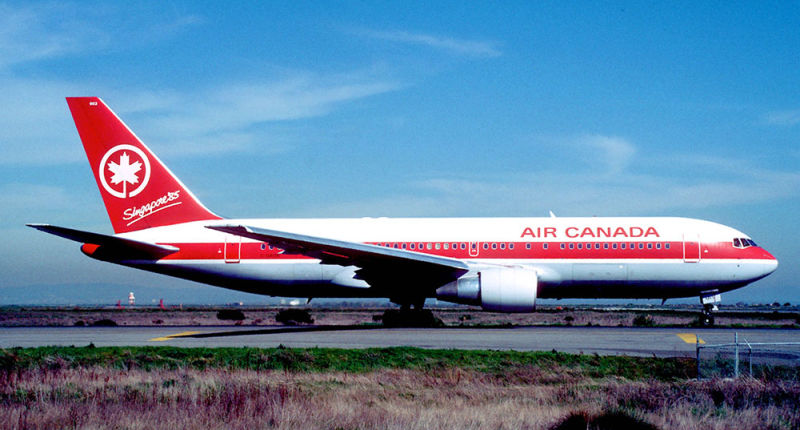Welcome to This Date in Aviation History, getting of you caught up on milestones, important historical events and people in aviation from July 22 through July 24.
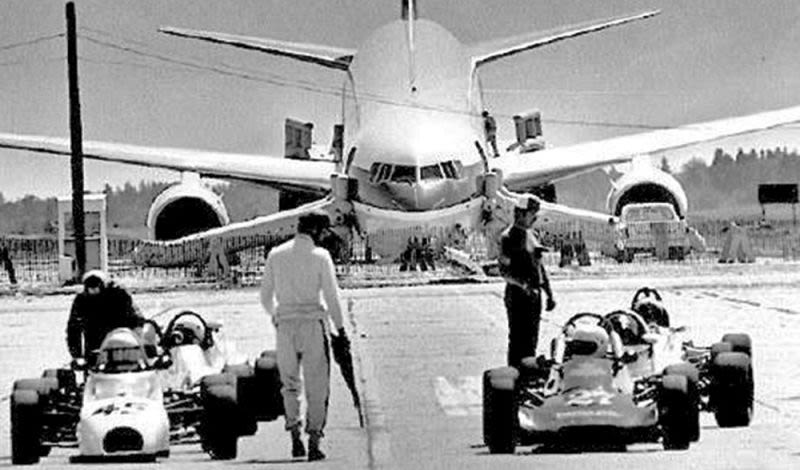
July 23, 1983 – Air Canada Flight 143, known as the Gimli Glider, runs out of fuel over Manitoba. When driving a car, most people rarely give the fuel gauge more than a passing glance, and many rely on a warning light to alert them when the fuel level is low. And unless you’re driving across the desert, you can pull over at any convenient gas station and top up. Driving across the country requires a bit more attention, as gas stations can be spaced farther apart, and perhaps even a little bit of math might be involved to figure out if there’s enough fuel to reach the next town or if you need to fill up now. And even then, running out of gas on the road is generally more of an inconvenience than a life-and-death situation. But calculating the amount of fuel to put in a transcontinental airliner is a much more involved task, and one that actually could be a matter of life or death. The aircrew must make calculations for the weight of passengers, cargo and fuel at takeoff, taxiing time, the distance and altitude of the flight, the rate at which the fuel burns off, and they must make sure that there is enough fuel in reserve to divert to another airport should the need arise. The vast majority of the time, the crew gets it right, and with fuel to spare. But in the case of Air Canada Flight 143, which came to be known as the Gimli Glider, the crew got it completely wrong.
Air Canada Flight 143 was a scheduled flight from Montreal to Edmonton when, at 41,000 feet, pilots Captain Robert Pearson and First Office Maurice Quintal were alerted to fuel pressure problem onboard their Boeing 767-233 (C-GAUN). Due to an electronic fault, the airliner’s fuel gauges weren’t working, but the pilots assumed that they had plenty of fuel based on the calculations they had made on the ground before the flight. In reality, they took off with half the amount of fuel necessary to reach their destination. Soon after the alarm, both engines quit, the 767 lost all power, and the majority of the instrument panels went dark. The pilots found themselves at the controls of world’s largest glider, a situation for which neither of them had ever trained.
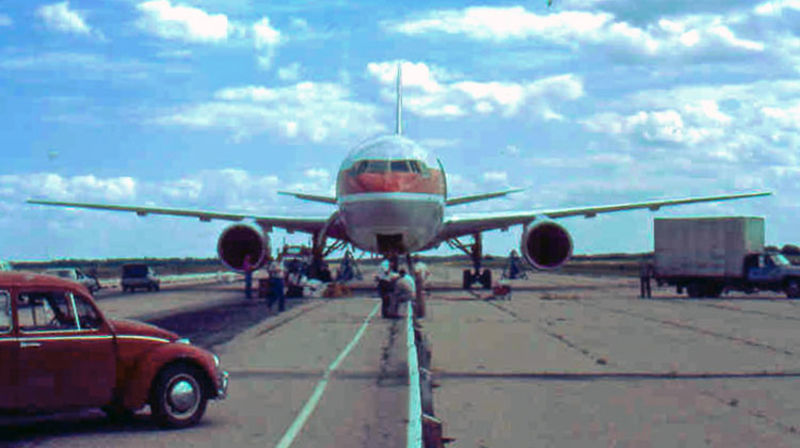
With the aid of ground controllers, the crew determined that their best option would be an emergency landing at Canadian Forces Base Gimli, a former Royal Canadian Air Force air station. However, though the runways were still mostly intact, the station was no longer active, and much of it had been turned into an industrial park and racetrack. And there was a race being held on the track at the time. The pilots performed a gravity drop of the landing gear, but the nose wheel failed to lock. Despite having no hydraulic power and limited electricity generated by an external turbine, the pilots still managed to land safely. A small fire in the nose of the aircraft was extinguished by race safety personnel at the scene, and all passengers and crew exited the plane safely, though some passengers were injured when the safety slides at the rear of the craft weren’t long enough to reach the ground due to the collapsed nose gear.

Investigators discovered that the fuel exhaustion was caused by a combination of miscommunication between the cockpit crew and maintenance personnel, fuel gauges that were disconnected or not functioning properly, and fuel calculations that had been made in pounds instead of kilograms, a result Canada’s ongoing transition from the Imperial to the metric system. For their part in the incorrect fuel calculation, Captain Pearson and FO Quintal were initially found to be partially at fault for the incident. Pearson was demoted for six months, and Quintal was suspended for two weeks. Maintenance personnel were also suspended. Despite these punitive measures, the flight crew was awarded the first ever Féderation Aéronautique Internationale Diploma for Outstanding Airmanship in 1985, and FO Quintal was eventually promoted to captain. The Gimli Glider was repaired and returned to service, and took its final flight on January 24, 2008, after which it was retired to storage in the Mojave Desert. When no buyers came forward to purchase the 767, it was dismantled, and aluminum from the plane was turned into souvenir keychains.
Short Takeoff
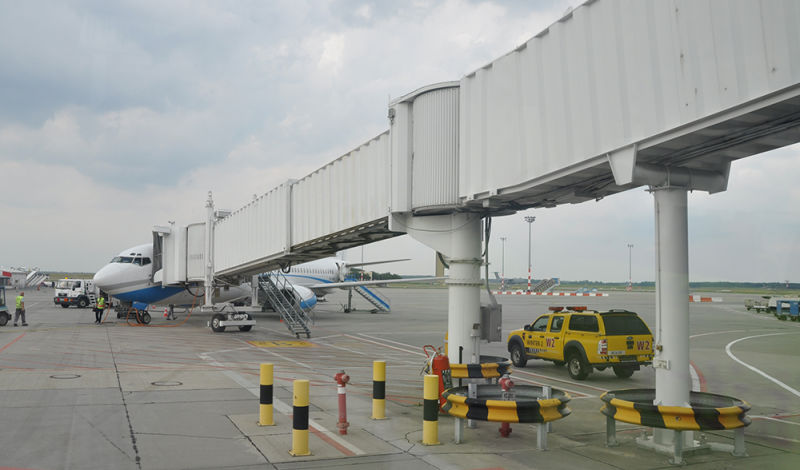
July 22, 1959 – The first “jetway” in the United States is installed at Hartsfield-Jackson International Airport in Atlanta.* While modern travelers are familiar with the extendable tunnel that leads passengers to their airplane, boarding an airliner in the early days of commercial aviation meant crossing the tarmac or muddy field and climbing stairs, often at the mercy of the elements. Engineer Frank Der Yuen patented an “apparatus for facilitating the loading and unloading of passengers and cargo,” and the trademarked name jetway has now become synonymous with any passenger boarding bridge (PBB) as it is officially known. Capable of being extended, retracted, moved, raised or lowered to accommodate most any airliner, the jetway is now a fixture at most airports around the world, and provides a safe and comfortable way for air travelers to board their plane.
* The actual location of the first jetway is not clear, with some accounts placing it at either O’Hare Airport in Chicago, Los Angeles International Airport, LaGuardia Airport in New York or San Francisco International Airport.
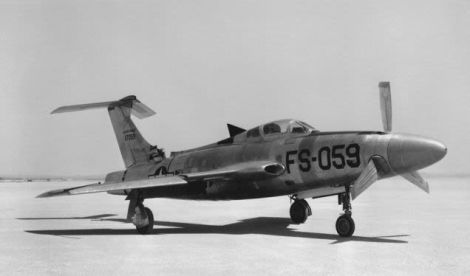
July 22, 1955 – The first flight of the Republic XF-84H “Thunderscreech,” a development of the Republic F-84F Thunderstreak intended to provide the US Navy with a fighter that could take off without a catapult. The XF-84H had a 5,850 hp Allison XT40 turboprop located behind the cockpit that turned a propeller in the nose through a drive shaft and which also provided thrust through its exhaust. An afterburner was fitted but never used. While the concept showed unprecedented acceleration, the aircraft took 30 minutes to warm up, and the supersonic propeller, turning at a constant Mach 1.18, caused continuous sonic booms that created a shock wave which induced acute nausea and headaches in the ground crew. The XF-84H was also one of the loudest aircraft ever produced, and its warmup could be heard 25 miles away. The test program was plagued by difficulties with control and engine reliability, and the XF-84H was cancelled in 1956 after the construction of two prototypes.
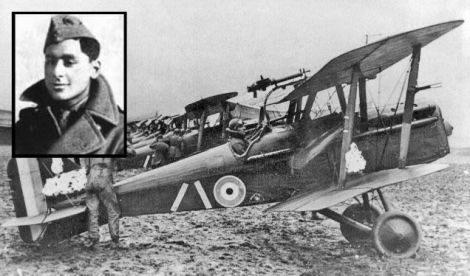
July 22, 1918 – The death of Indra Lal Roy, India’s only WWI flying ace. Born on December 2, 1898 in Calcutta, former British India, Roy was attending school in London when the war broke out, and he was initially rejected by the Royal Flying Corps for poor eyesight. Only after getting a second opinion was he accepted for flight duty. After recovering from injuries suffered in the crash of his Royal Aircraft Factory S.E.5a, Roy returned to service and scored 13 victories (two shared) in just two days. Roy was killed in a dog fight against a Fokker D.VII, and he was posthumously awarded the United Kingdom’s Distinguished Flying Cross, the first Indian to receive the honor. Roy was just 19 years old.

July 23, 2020 – Tianwen-1 launches on a mission to explore Mars. In its first solo voyage to Earth’s closest neighbor, China launched a orbiting probe and lander to Mars from the Wenchang Spacecraft Launch Site on Hainan Island atop a Long March 5, the country’s largest launch vehicle. With Mars at its closest to Earth in a 26-year orbital cycle, the probe is expected to reach the Red Planet in February of 2021. This is China’s second attempt to reach Mars. In 2011, they teamed up with Russia, but the mission ended in failure when the vehicle failed to exit Earth orbit. Tianwen-1 is programmed to land on the Utopia Planitia in Mars’ northern hemisphere, then deploy a rover for 90 days of exploration. If successful, it will be the first time any nation has landed and deployed an rover on its first mission to Mars. There are currently eight other missions operating or on their way to Mars launched by the United States, the European Union, India/Russia, and the United Arab Emirates.
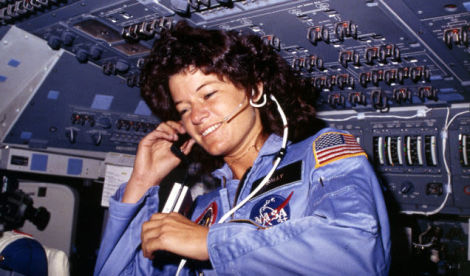
July 23, 2012 – The death of Sally Ride, a physicist, astronaut, and the first American woman in space. Born in Los Angeles, California on May 26, 1951, Ride joined NASA in 1978 and first went to space in 1983 as a Mission Specialist on board Space Shuttle Challenger during mission STS-7. With that flight, Ride became not only the first American woman in space and the first known LGBT astronaut, but, at age 32, she was also the youngest American astronaut to fly in space. Ride went to space a second time the following year, again on Challenger, as a Mission Specialist on ST-41-G. Ride left NASA in 1987, but served on the investigation committees into the Challenger and Columbia disasters. After teaching physics at the University of California, San Diego, Ride died of pancreatic cancer at age 61.
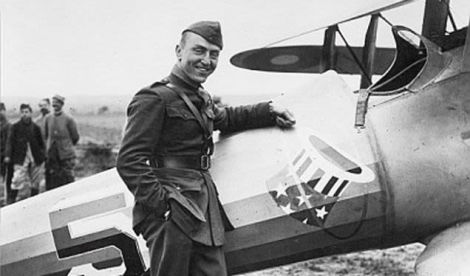
July 23, 1973 – The death of Eddie Rickenbacker. Born on October 8, 1890 in Columbus, Ohio, Rickenbacker was America’s leading ace in WWI and a recipient of the Congressional Medal of Honor. Rickenbacker served in the 94th Aero Squadron, nicknamed the “Hat-in-the-Ring” squadron, where he flew French-made Nieuport 28 and SPAD S.XIII fighters and finished the war with 26 confirmed victories. Rickenbacker eventually commanded the 94th, then started the short-lived Rickenbacker Motor Company in 1920. Rickenbacker made his greatest contribution to aviation as the head of Eastern Air Lines, which he led from 1938 until his retirement in 1963. Rickenbacker died of a stroke at the age of 82.
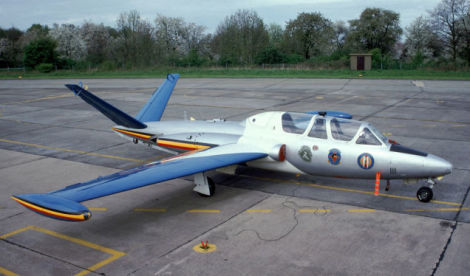
July 23, 1952 – The first flight of the Fouga CM.170 Magister, a jet-powered trainer built for the French Armée de l’Air to replace the Morane-Saulnier MS.475. The world’s first purpose-built jet trainer to enter production, the Magister is a straight-wing monoplane with a distinctive V-shaped tail, a design element that Fouga borrowed from its CM.8 glider. Fouga also produced a naval variant for the French Navy, the CM.175 Zéphyr, which was used as the primary trainer for pilots learning carrier operations. The Magister also operated as a light attack aircraft, and could be armed with two machine guns and up to 310 pounds of external ordnance. Widely exported and also built under license by West Germany, Finland and Israel, a total of 929 CM.170s were produced.
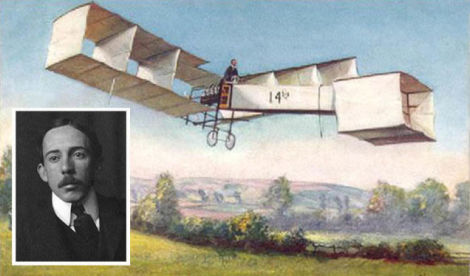
July 23, 1932 – The death of Alberto Santos-Dumont, a Brazilian aviation pioneer and one of the early inventors of aircraft in France. Born on July 20, 1873, Santos-Dumont got his start in aviation with ballooning and dirigibles, then constructed his first aircraft, the 14-bis, in which he made the first heavier-than-air flight in Europe in 1906. His final aircraft, the Demoiselle monoplane, became the world’s first production airplane. Santos-Dumont is a national hero in his homeland to this day, where he is known as the “father of flight,” and many Brazilians believe that his flights predated those of the Wright Brothers. Despite his success and celebrity, Santos-Dumont committed suicide by hanging himself. He was said to be depressed over his multiple sclerosis, and also upset over the use of aircraft as a weapon of war in São Paolo’s Constitutionalist Revolution. Santos-Dumont was 59 years old.
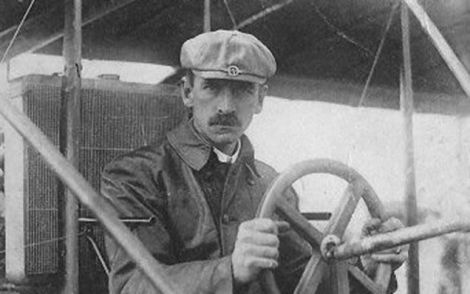
July 23, 1930 – The death of Glenn Curtiss. Though often eclipsed in history books by the Wright Brothers, Glenn Curtiss was one of America’s greatest aviation pioneers, and has been credited with the creation of the American aviation industry. Born on May 21, 1878 in Hammondsport, New York, Curtiss’ credits include the first officially witnessed flight in North America, victory at the world’s first international air meet in France, and the first long-distance flight in the US. Curtiss also provided the US Navy with its first aircraft in 1911, the A-1 Triad, heralding the birth of US Naval Aviation. The Curtiss Airplane and Motor Company, and later Curtiss-Wright, made contributions to military aviation in both World Wars which are too numerous to mention here, but some of the most important aircraft built by him or his company include the JN4 “Jenny” biplane, the P-36 Hawk and P-40 Warhawk, the C-46 Commando, and the SB2C Helldiver.
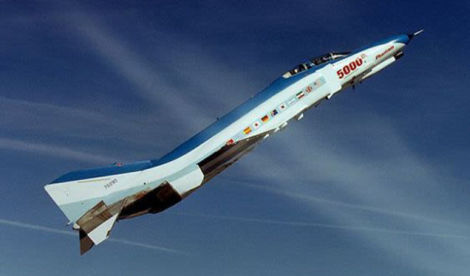
July 24, 1978 – McDonnell Douglas completes the 5,000th F-4 Phantom II. One of the iconic aircraft of the Cold War era, the Phantom II entered service in 1960 with the US Navy and eventually became one of the few fighters to serve simultaneously in the Navy, US Marine Corps, and US Air Force. Production of the two-seat all-weather interceptor/fighter-bomber began in 1958 and, by the time production ended in 1981, a total of 5,195 were built to serve the US military and 11 export nations. The F-4G Wild Weasel electronic warfare variant served as late as 1991 in the Gulf War and, following the Phantom’s retirement from US service in 1996, remaining F-4s were converted to QF-4 target drones.
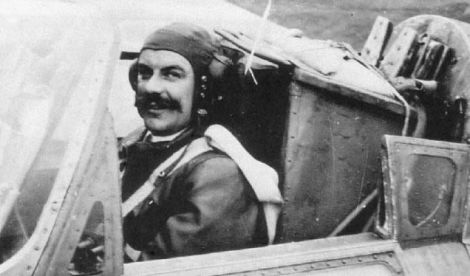
July 24, 1946 – Bernard Lynch becomes the first person to be ejected from an airplane. The death of Valentine Baker in an aviation accident in 1942 spurred his business parter, James Martin, to begin work on the first production ejection seat and, in 1944, the RAF Air Staff approached Martin to develop an escape system for their new jet-powered fighters. Martin designed a seat that was launched out of the aircraft using an explosive charge and, after numerous tests on the ground over the course of a year, Lynch, a Martin-Baker employee, was successfully ejected from a Gloster Meteor flying at 8,000 ft. Fortunately for Lynch, the seat performed flawlessly, and Martin-Baker continues making ejection seats to this day.

July 24, 1897 – The birth of Amelia Earhart. Born in Atchison, Kansas, Amelia Earhart holds a significant place in the annals of American aviation history, as she was not only a pioneering aviator but also a pioneer in the expansion of societal roles for women in general. Earhart took her first flying lessons in 1921, and set her first world altitude record the next year. In 1928, she was the first woman to cross the Atlantic by plane, albeit as a passenger, but made her own transatlantic solo flight in 1932, a feat for which she received the Distinguished Flying Cross. Earhart set numerous other flying records, but disappeared over the Pacific Ocean in 1937 with navigator Fred Noonan on her second attempt to circumnavigate the globe. The mystery of her disappearance remains unsolved to this day.
Connecting Flights
If you enjoy these Aviation History posts, please let me know in the comments. You can find more posts about aviation history, aviators, and aviation oddities at Wingspan.
